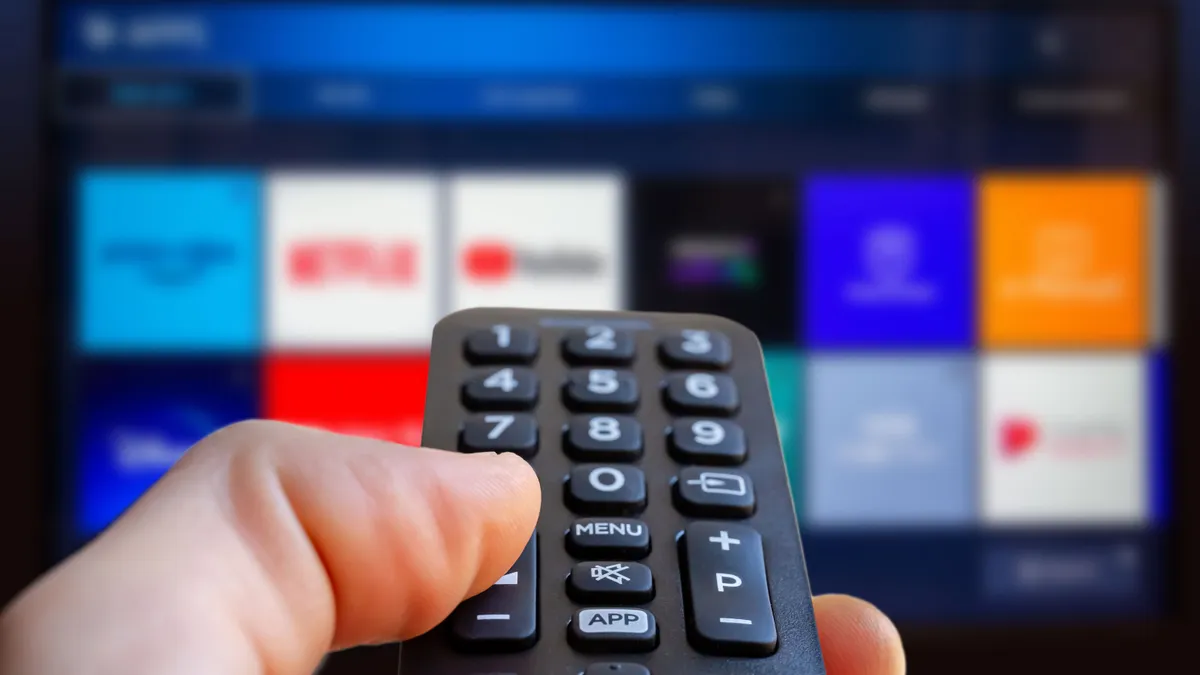For Hostess Brands CEO Andy Callahan, turning the century-old maker of Twinkies, Ding Dongs and Donettes into "a snacking powerhouse" is as much about looking toward its future as it is about embracing his own past.
Nearly two decades ago, the CPG veteran was overseeing the Kraft Singles cheese business, the company's most profitable offering. Kraft discovered the way it had differentiated the brand for years — adding calcium — was no longer enough to entice consumers. Once unique, extra calcium had infiltrated a slew of other products such as orange juice, bars and pasta, giving shoppers several ways to consume the mineral that is associated with healthy bones and teeth.
While Callahan recognized that the brand needed to change to reestablish its edge, he recalled being beholden to top executives who had built their careers on the success of Kraft Singles. They "wanted so badly" for what had worked in the past to continue that they never really "dug in" to challenge if their strategy for the brand was outdated, he said.
"I promised I was never going to let that happen again," Callahan said in an interview. "I believe in staying true to the consumer’s need and being decisive and bold in our product strategy."
Today, the 56-year-old executive is using his experience at Kraft to help him further transform Hostess and keep the company relevant in a fast-evolving landscape beset by changing consumer habits and competition from deep-pocketed competitors.
Since he took over in May 2018, Callahan has worked on accelerating innovation, expanding the eating occasions throughout the day for his iconic brands, and shoring up Hostess' balance sheet to give it more firepower to acquire products to complement its portfolio of cream-stuffed yellow cakes and chocolate-covered mini doughnuts.
"We can't be worried about the past. We set the innovation targets to stay relevant," Callahan, a former Naval flight officer, said. "We have high awareness and high connection to our brand. That's a powerful starting point to unlock. Our brands stand for something."
From bankruptcy to booming growth
Hostess' past almost erased any hope of having a company left for Callahan to run. A decade ago, Hostess was on the verge of going out of business. It had plunged into its second bankruptcy in eight years under the weight of a convoluted labor framework, thousands of delivery routes and a bloated manufacturing system amassed from a series of acquisitions.
In 2013, the snack-cake purveyor was purchased out of liquidation by private equity firms with the goal of coming back as a much leaner, more sustainable operation. Hostess, which traces its roots back to 1919, re-emerged as a public company in 2016 and spent the next few years investing in staffing and analytics while streamlining its portfolio and replenishing its innovation pipeline.
Buoyed by its reorganization, consumers' growing appetite for snacks and a suite of brands like Ho Hos, Donettes and the ageless Twinkie, Kansas-based Hostess has quickly emerged as a standout in the food space. Its snacks can be found nearly everywhere consumers shop, including club and dollar stores, mass merchandisers as well as grocery and convenience outlets — the latter two responsible for more than 70% of its dollar sales.
It has posted eight consecutive quarters with revenue growth topping 9% and increased its market share of sweet baked goods by more than 4 percentage points during that same period to just over a fifth of the category, according to Nielsen data provided by the company. Hostess also has posted a compound annual growth rate of 10% during the past few years, outpacing its competitors' 4% increase.
"We don't have legacy portfolios dragging down our growth, so we have an advantage admittedly to some of those big companies," Callahan said. "There are plenty of brands out there that become stale, that become irrelevant."
Despite Hostess' recent success, the company is not immune to pressure on its business from further shifts in food consumption, especially with a portfolio associated with sweets and indulging, or from innovation coming from other large CPGs.
Paul Earle, an adjunct lecturer at Northwestern University's Kellogg School of Management and cofounder of a nutrient-rich macaroni and cheese brand, said the perception of Hostess by consumers as a purveyor of sugar-laden, unhealthy snacks will weigh on the company's brands as trends revert back to before the pandemic.
Even though shoppers gravitated toward nostalgic brands and familiar offerings during COVID-19, Earle sees that as temporary. Instead, he said, growth at Hostess will wane as upstart brands and companies with better-for-you attributes or a focus on sustainability or environmental consciousness grab a larger share of the consumer dollar.
A majority of consumers are incorporating their values into the snacks they want to buy, according to a study released in January from Mondelēz International. The data showed these values encompassing a so-called "broader consciousness" are likely to intensify in the coming years.
"I'm certainly not trying to put a pox on" Hostess, Earle said. "Sure, you can crush it during the pandemic where people are reflectively going back to very simple things that they know, but I wouldn't bet on it in the future."
A 'smarter, sharper' company
Hostess will undoubtedly have its hands full competing against other CPGs with equally well-known brands and even deeper financial pockets, like Oreo owner Mondelēz International, Reese's and Kisses manufacturer Hershey, and privately held Mars Wrigley, the firm behind M&M's and Kind bars.
To expand sales and compete against these heavyweights, Hostess is pinning its future on targeting the fastest-growing snacking occasions — morning sweets, lunch, afternoon reward, immediate consumption and afternoon sharing — that collectively are valued at more than $50 billion.
In the past year, Hostess has launched products such as Baby Bundts for a morning sweet, Crispy Minis snacks in a bag for sharing, and Hostess Boost Jumbo Donettes, a mega-size version of its popular mini doughnut with slightly less caffeine than one cup of coffee aimed at consumers looking for a morning wakeup or afternoon pick-me-up.
Hostess is also looking to M&A as an avenue to grow its business, hoping to replicate the 22% sales growth it has witnessed following its 2020 purchase of Voortman. Callahan said Hostess has as much as $2 billion at its disposal that it could tap into for deal-making to "really scale up our company."
Hostess is targeting category-leading brands that enhance its presence in spaces where it already exists, or that enable it to enter into a new niche, much like Voortman did with its wafers and sugar-free cookies, he said. Any acquisition also would need to be scalable and something Hostess could easily integrate into its existing distribution network.
Ben Bienvenu, an analyst with Stephens, said Hostess is now a much "smarter, sharper" company that is benefiting not only from trends infiltrating the food space like snacking but also internal moves that have given it a well-defined advantage over its competitors. The company, he said, has prioritized improving the quality of its product, bulking up on the use of data to guide its decision-making and shrewdly refreshing its portfolio through innovation and acquisitions.
"It is very expensive to build the equity and the awareness of a Twinkie, of a Ding Dong, of some of these other businesses that we have. But to ... bring them back out in more forms that are as relevant or meaningful today as they were 100 years ago is magical for me.”

Andy Callahan
CEO, Hostess Brands
During the height of the pandemic, Hostess outpaced its competitors in keeping its items stocked on store shelves, enabling it to deepen its relationship with the consumer, Bienvenu said. The broader strength of Hostess' brands and their positioning in the marketplace as an impulse offering have allowed the snack maker to raise prices more easily as part of a natural course of doing business and to offset surging costs tied to higher inputs and supply chain disruptions.
Earlier this month, Hostess announced it will spend up to $140 million to convert an idled factory in Arkansas into a bakery to meet increased demand for its cakes and Donettes, its largest brand with half a billion in annual sales.
"They definitely have the wind at their backs and they're making the most of it," Bienvenu said. "They've executed really well compared to some of their bigger peers."
While higher gas prices could cut into convenience store sales, and a reversion back to a more normal supply chain could diminish some of the advantages Hostess has amassed during the past several months, Bienvenu said any risks to the company are minor and are being overshadowed by an otherwise strong business. He expects Hostess to gain additional shelf space, distribution and consumer recognition.
"They have momentum now," he said. "There's a lot of credit that needs to go to the management team. They've done a fantastic job over the last two years."
For Callahan, his efforts to grow the company and keep it relevant among consumers inundated with choice are heavily influenced by the responsibility of stewarding a portfolio of brands that have been a staple on store shelves for years, even as hundreds of thousands of other long-forgotten products have come and gone. He's not about to turn Hostess into the food industry's next footnote.
"We're caretakers of this 100-year-old brand. It's our turn. We're going to turn it over to the next generation," he said. "It is very expensive to build the equity and the awareness of a Twinkie, of a Ding Dong, of some of these other businesses that we have. But to ... bring them back out in more forms that are as relevant or meaningful today as they were 100 years ago is magical for me.”
























